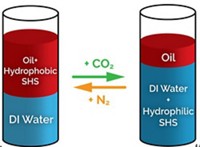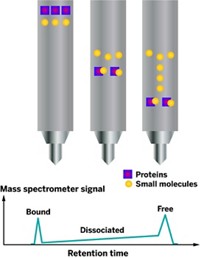Advertisement
Grab your lab coat. Let's get started
Welcome!
Welcome!
Create an account below to get 6 C&EN articles per month, receive newsletters and more - all free.
It seems this is your first time logging in online. Please enter the following information to continue.
As an ACS member you automatically get access to this site. All we need is few more details to create your reading experience.
Not you? Sign in with a different account.
Not you? Sign in with a different account.
ERROR 1
ERROR 1
ERROR 2
ERROR 2
ERROR 2
ERROR 2
ERROR 2
Password and Confirm password must match.
If you have an ACS member number, please enter it here so we can link this account to your membership. (optional)
ERROR 2
ACS values your privacy. By submitting your information, you are gaining access to C&EN and subscribing to our weekly newsletter. We use the information you provide to make your reading experience better, and we will never sell your data to third party members.
Analytical Chemistry
Automated Method Quickens Acidity Measurements
Analytical Chemistry: A new tool that pairs an automated buffer-creation system with capillary electrophoresis yields pKa values in minutes
by Puneet Kollipara
June 5, 2015

A new analytical method that can measure a substance’s acidity in solution within minutes could take some of the hassle out of drug discovery. In lab studies on several common drugs, the tool—which pairs a chemical separation method with an automated buffer-creation system—yielded pKa values close to those obtained from traditional methods but in a fraction of the time (Anal Chem. 2015, DOI: 10.1021/acs.analchem.5b00845).
When pharmaceutical companies screen compounds to identify potential drug candidates, one parameter they measure is the pKa, which indicates how much a drug candidate will dissociate into its constituent ions at a given pH. This property in turn influences how easily the compound will pass through cell membranes.
To measure pKa values, scientists increasingly rely on the separation method known as capillary electrophoresis (CE), which uses an applied electric field to make charged analytes migrate through a thin capillary tube filled with an electrolyte. Scientists send analytes through the capillary in a series of electrolytic buffers with a range of pH values. On the basis of how fast an analyte migrates in each pH, scientists can infer the substance’s pKa.
Recently, scientists have streamlined CE by injecting analytes together with standard compounds that have well-known pKa values into the capillary. Including this reference compound drastically reduces the number of trials needed to measure a pKa value. Still, CE methods remain cumbersome, in part because of the tedious job of preparing all the needed buffers: Often at least 20 trials are needed in a range of pH levels. Now, Michael C. Breadmore of the University of Tasmania, in Australia, and his colleagues report that they have made pKa measurements with CE faster, and even partially automated the process.
Using a 3-D printer, they made a microfluidic device for their CE system that automatically mixes buffers of a specified pH in less than a minute. To make the buffer, the micromixer combines fluids fed into it by a series of programmable valves. These fluids include stock buffers, a strong acid or base to tweak the stock buffers’ pH, water to dilute the solution, and an organic solvent (in this case methanol) to allow the study of water-insoluble analytes. The CE system injects the analytes and standard compounds into the buffer solution one at a time as the buffer enters the capillary. This flexible, simple-to-use design minimizes the amount of reagents used, Breadmore says.
To show the method’s precision and speed, the researchers tested it on a number of drugs—including ibuprofen, papaverine, clonidine, and mefenamic acid—all of which have well-studied pKa values. The resulting pKa values all fell within about 1% of those obtained by a traditional method, indicating a close match. Importantly, the method could determine one pKa value within two or three minutes. The researchers say their method could potentially be adapted to high-throughput devices.
Carlos D. Garcia, an analytical chemist at the University of Texas, San Antonio, says the method could make pKa measurements easier and less cumbersome. In theory, the method could work well with organic solvents other than methanol, such as dimethyl sulfoxide and acetonitrile, he says. “This point is particularly important for the pharmaceutical industry because only a limited number of compounds are water soluble,” Garcia says.




Join the conversation
Contact the reporter
Submit a Letter to the Editor for publication
Engage with us on Twitter